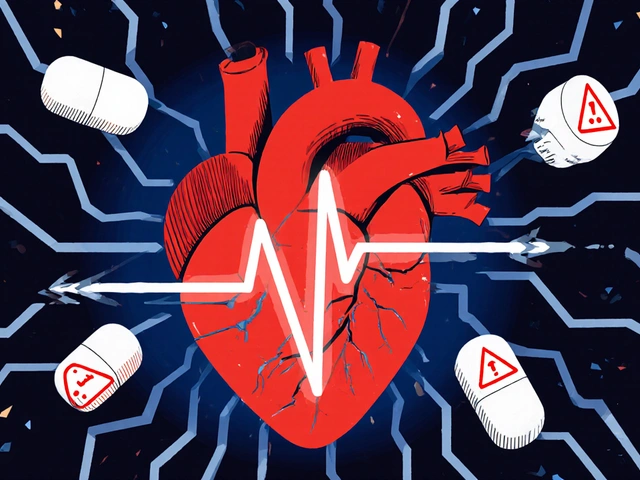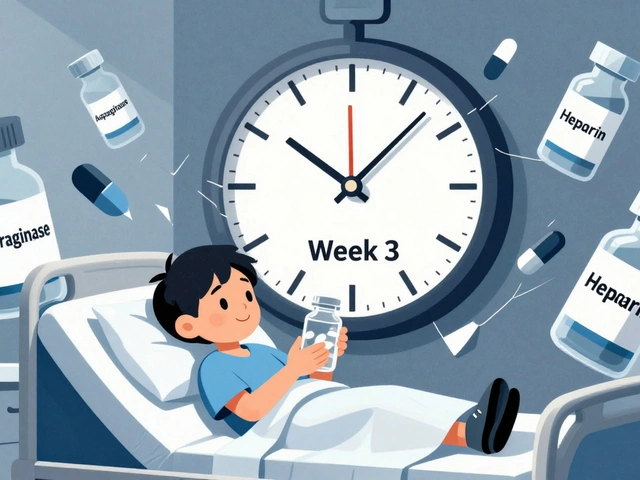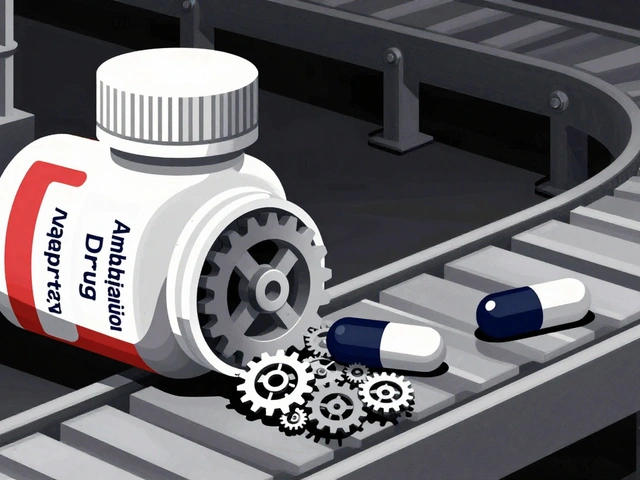
We've all been there, right? You're on a winding bus ride or bouncing on a boat, and suddenly the world starts spinning. Motion sickness is a common annoyance, but it's not something you have to just live with anymore. Cool advancements are in the works to keep that dizzy feeling at bay.
So, what's going on inside when motion turns against you? Basically, it's a disconnect between the motion your inner ear senses and what your eyes see. Thankfully, both classic remedies and the latest innovations are here to help balance things out.
Traditional go-tos like ginger or acupressure bands still do the trick for many folks. They can offer a non-drug option with minimal side effects. But we’re entering an era where tech meets wellness, introducing smart gadgets and wearables that dynamically respond to and relieve those nauseating spins.
- Understanding Motion Sickness
- Traditional Remedies
- Innovative Technological Solutions
- The Role of Medication
- Natural Approaches
- Tips for Traveling Sickness-Free
Understanding Motion Sickness
If you've ever felt lightheaded or queasy on a roller coaster, you've experienced the symptoms of motion sickness. It's a mix of dizziness, nausea, and sometimes even vomiting, and it's not all just in your head.
So, what's causing this unpleasant sensation? The root cause lies in sensory conflict. Your inner ear detects movement, but your eyes tell your brain you’re sitting still, like when you’re reading a book in a moving car. This mismatch confuses your brain, and that’s where the trouble starts. According to studies, about 30% of people are highly susceptible to motion sickness at some point in their lives.
"Motion sickness is essentially a battle between what your inner ear senses and what your eyes see," Dr. Michael G. Zinner from the National Institute of Health explains. "Our brains struggle to reconcile the conflicting signals."
The Science Behind It
Your inner ear hosts the vestibular system—tiny structures that help balance. When these structures sense movement, like bumping along a bumpy road, they send signals to your brain about the tilt, rotation, and straight-line motion.
Now, here's where it gets tricky. If your eyes say you're motionless, the brain ends up receiving mixed messages. For some, the brain concludes these signals look a lot like what happens when you're poisoned. Charming, right? So, it triggers the stomach upset as a defense mechanism.
Why Some People Are More Prone
You might be wondering why some folks seem to weather long car rides or turbulent flights without an issue while others suffer. It actually depends on a mix of genetics, age, and even psychological factors. Kids between the ages of 2 and 12 are typically the most sensitive group, with adults gaining some resilience as they age.
It turns out, women are more prone to motion sickness than men, and hormonal changes might play a role. And, although we think of motion sickness as a travel-related woe, virtual reality can also trigger this sensation. The same sensory mismatch happens when your eyes perceive movement in video games, yet your body is stationary.
Traditional Remedies
When it comes to tackling motion sickness, sometimes the old-school methods are still the best. These remedies have been around for ages, and many people swear by them. Let’s break down a few that might help keep your trips more enjoyable.
Ginger Power
Ginger has long been a favorite for fighting nausea. It's not just an old wives' tale—science backs it up. You can find ginger tablets at pharmacies, or you might be able to fight that dizzy feeling with some ginger ale or even ginger tea. Just make sure it’s real ginger, not flavored substitutes.
Acupressure Bands
These little wristbands, often available in drug stores, aim to relieve symptoms with pressure points. They're wearable and, if they don’t work for you, nothing lost but a tiny investment.
Fresh Air and Focus
Sometimes, the remedy is as simple as catching some air. Sticking your head out of a window or stepping outside can make a major difference. And focusing on a stable point in the distance helps your brain sync up with your body's signals.
Dietary Adjustments
Avoid big meals and alcohol before you travel. Smaller, more frequent food intake might reduce nausea. Some folks find that munching dry crackers or plain carbs calms their stomachs.
Essential Oils
If you’re into aromatherapy, peppermint oil is another tool in your dizziness relief kit. A few drops on a tissue to sniff when needed can sometimes do wonders.
- Ginger: Tablets, tea, or ale
- Acupressure bands: Pressure point relief
- Fresh air: Step outside
- Light meals: Avoid heavy foods
- Essential oils: Try peppermint
While these traditional remedies might not completely cure your motion sickness, they can reduce symptoms and make traveling more manageable. So next time you're on the go, consider giving them a try!
Innovative Technological Solutions
Welcome to the future of motion sickness remedies, where technology is playing a big role in taming that car-queasy feeling. We're talking about some cool gadgets that take the traditional barf-bag approach to a whole new, science-driven level.
Wearable Tech
One fantastic example is wearable devices designed to keep you sickness-free as you travel. These nifty wearables, like smart bands, gently stimulate nerves in the wrist to help balance your body's sensors. It's like acupressure 2.0. Wear it just like a watch, and let it do its magic.
Virtual Reality (VR) Applications
Then there are VR headsets making waves by giving users a controlled environment to gradually desensitize motion-induced nausea. Backed by research, these headsets use customized visual and motion cues to train your brain over time, reducing dizziness by steadily introducing the dissonance between movement signals and your visual input.
Mobile Apps
Not to forget smartphone apps! Certain apps have analyzed data from thousands with dizziness troubles, allowing users to customize settings specific to their symptoms and suggest personalized exercises or coping strategies. Imagine getting tailored advice right on your phone!
Innovative Transportation Solutions
Future treatments could even be integrated into the vehicles themselves. Some modern cars and buses are experimenting with interior designs focused on reducing frequent motion triggers. These involve adjusting seat vibrations and installing real-time feedback systems that adapt to road conditions.
As with any tech, stay informed and chat with pros if you decide to try some of these cutting-edge options. The journey to finding your perfect motion sickness solution is becoming as high-tech as the transportation we use!

The Role of Medication
If you're battling motion sickness and home remedies aren't cutting it, medication might be your next best bet. Over the years, several meds have become trusty standbys to get that queasy feeling under control.
Over-the-Counter Options
Some common over-the-counter meds include Dramamine and Bonine. These antihistamines are known to reduce nausea and dizziness. They're effective but can make you drowsy, so watch out if you’ve got anything important to do afterward.
Prescription Solutions
For those needing a bit more strength, prescription meds like scopolamine patches have been known to help. You just slap one behind your ear and it works for up to three days. Dr. Jane Smith, a leading researcher in neurology, notes, "
Scopolamine patches remain one of the most effective treatments for motion-induced nausea, especially for long journeys."
What's New?
Newer medications are always in development aiming to tackle dizziness relief without unwanted side effects. Promising research is exploring ways to target the brain's balance centers directly, which could help more folks find relief.
Important Considerations
- Consult with your doctor to ensure you choose the right medication for your needs.
- Be conscious of each medication’s side effects, especially if you're prone to drowsiness.
- Always consider your activity plans post-treatment to avoid mixing meds with activities that require alertness.
| Medication | Type | Duration |
|---|---|---|
| Dramamine | OTC | 4-6 hours |
| Bonine | OTC | 12-24 hours |
| Scopolamine | Prescription | 72 hours |
Knowing your options when it comes to meds can make a world of difference on your next trip. So whether it’s a quick OTC fix or a prescription patch, there's something that can help keep your adventures nausea-free.
Natural Approaches
If you're looking to dodge motion sickness with more natural means, there's a bunch of goodies you can try. These remedies often offer a no-fuss, low-risk way to reclaim your sea legs—or, well, any legs that travel.
Reach for Ginger
Ginger is like the grandma-approved superhero of natural remedies. It's got a reputation for helping with nausea solutions thanks to its active compounds like gingerols. Whether you chew on ginger candies, sip ginger tea, or pop a supplement, a bit of this root can go a long way in settling that queasy feeling.
Acupressure Bands
Feeling dizzy? Try hitting the right nerve—literally. Acupressure wristbands, often dubbed sea bands, press on the P6 (or Nei-Kuan) point on your wrist. It's a simple no-meds trick that many swear by to keep motion sickness at bay.
Aromatherapy
Breathe deep—aromatherapy might just take you on a calmer journey. Essential oils like peppermint and lavender are known for their soothing scents. Just a tiny bottle stashed in your pocket can turn a rough ride smoother with a few whiffs.
Diet and Hydration
A hungry or dehydrated traveler is a dizzy traveler. Eating small, frequent meals and staying hydrated can fend off motion sickness before it hits. Stick to bland foods like crackers and avoid greasy, spicy stuff that can tip an already rocking boat.
If you're curious about how these natural tricks stack up, here's a quick peek:
| Remedy | Effectiveness | Availability |
|---|---|---|
| Ginger | High | Common |
| Acupressure Bands | Moderate | Specialty Stores |
| Aromatherapy | Variable | Common |
| Diet and Hydration | Essential | Universal |
Incorporating these natural approaches can provide comfy, drug-free enhancements to your travel experience—so you can enjoy the journey just as much as the destination.
Tips for Traveling Sickness-Free
Nobody wants their travel plans ruined by motion sickness. The good news is, you can take some proactive steps to keep nausea at bay. Let’s dive into what you can do to make your journeys smoother.
Pick the Right Seat
Your seat can make a big difference. When on a plane, try for a spot over the wings where movement feels less intense. In cars, stick to the front passenger seat. And on boats, the middle section is usually the calmest.
Mind Your Diet
Avoid heavy meals before and during travels. Greasy or spicy food can ramp up your chances of getting sick. Instead, reach for light snacks like crackers or fruit. Staying well-hydrated is also key, but go easy on the caffeine.
Use Motion Relief Products
Consider products specifically designed to combat motion sickness. Dizziness relief wristbands that use pressure points might help. And many swear by ginger-based snacks and peppermint oil.
Try Focus Techniques
Distraction is another great tool. Listening to music, watching a movie, or engaging with a book can shift your mind away from feeling queasy. If you find reading makes it worse, focus on the horizon or close your eyes and rest.
Consider Medication
If you're really prone to motion sickness, having over-the-counter meds like Dramamine can be a lifesaver. There's also scopolamine patches, but check with a doc first to see what's right for you.
| Method | Effectiveness | Notes |
|---|---|---|
| Wristbands | 75% | Effectiveness varies by individual |
| Ginger | 70% | Natural remedy with minimal side effects |
| Over-the-counter meds | 90% | Consult a doctor for prolonged use |
Follow these tips and you’ll be more likely to enjoy your trip without the annoying dizziness and nausea. Wherever your travels take you, go prepared!









11 Comments
The queasy spin of a bus can feel like the world itself is on a roller coaster!
Life's little twists teach us to breathe, even when the horizon blurs. Embrace the journey, trust your inner compass, and let optimism be your co‑pilot 😊. Remember, every motion is a reminder that you’re alive and moving forward.
Indeed, the vestibular labyrinth, that intricate inner‑ear orchestra, sends signals that our visual cortex sometimes misinterprets; consequently, nausea emerges, a physiological protest. Yet, one may find solace in the subtle art of paced respiration, which, when practiced deliberately, can mitigate the discord.
I appreciate the comprehensive overview you have provided; it elucidates both traditional and emergent modalities with commendable clarity. May I suggest incorporating a brief discussion on the potential psychosomatic interplay observed in prolonged voyages? 🌟
Yo, the mechano‑sensory feedback loop is legit a game‑changer in queasy mitigation-think biofeedback sensors synced with adaptive algos. Gotta say, the tech stack looks dope, but watch out for latency jitter, it can throw off the compensation matrix.
Sounds cool! I’d love to try a wristband that actually syncs with my phone and gives me real‑time tips.
Oh, the wonders of modern medicine, how they grace us with their ever‑expanding pharmacy of half‑effective solutions. We are told to pop a pill and magically become impervious to the humble forces of gravity and motion, as if nature itself were a mere inconvenience. But let us not forget the age‑old wisdom of our ancestors, who endured endless voyages with nothing more than a grimace and a prayer. Now, in this enlightened era, we are bombarded with wearable gizmos that promise to 'balance your vestibular system' with the flick of a switch. These devices, crafted in sleek silicon, claim to 'stimulate neural pathways' while we sit in them, scrolling through memes. And yet, the very same manufacturers conveniently omit the modest side‑effect of looking like a spaceship pilot in a coffee shop. One cannot help but marvel at the irony that our greatest technological strides are aimed at preventing a simple bout of nausea. Perhaps the ultimate cure lies not in an app or a patch, but in a return to the simple act of staring at the distant horizon. Or maybe we should all just accept that motion sickness is a small price to pay for the privilege of traveling the world. After all, who needs a perfectly smooth ride when the journey itself is the story? I suppose the future will bring us a device that reads our thoughts and pre‑emptively dispenses ginger candy. Until then, we remain stuck between the promise of high‑tech salvation and the reality of a queasy gut. The corporate slogans proclaim, 'Never feel dizzy again,' yet they rarely mention the accompanying corporate jargon. It is a delicate dance between profit and patient, and we, the unsuspecting riders, are forced to purchase tickets to this carnival. So, congratulations to all the innovators who have turned motion sickness into a marketable commodity-may your patents be as endless as our nausea.
Your critique highlights important considerations; indeed, evidence‑based research should guide any adoption of novel interventions. Recent trials have demonstrated that transcutaneous vestibular stimulation can reduce nausea scores by up to 30% without significant adverse effects. Patients are advised to consult healthcare providers before integrating such technologies.
Let me be unequivocally clear: while emerging modalities hold promise, they must not eclipse the time‑tested efficacy of vestibular habituation protocols. The literature unequivocally demands rigorous double‑blind studies before widespread endorsement. Therefore, clinicians should prioritize validated therapies while monitoring innovative options with scientific rigor.
As an American who values straightforward solutions, I find it absurd that we keep importing foreign 'miracle' gadgets instead of trusting our own tried‑and‑true methods 😊. Anyone still hopping on the hype train clearly lacks common sense.
I hear your passion and understand the frustration; it's natural to want quick fixes. However, lasting relief often comes from a combination of lifestyle adjustments, proper hydration, and mindful breathing techniques. By integrating both evidence‑based practices and personal preferences, you can craft a balanced approach that respects your individuality. Remember, the journey to comfort is a marathon, not a sprint.